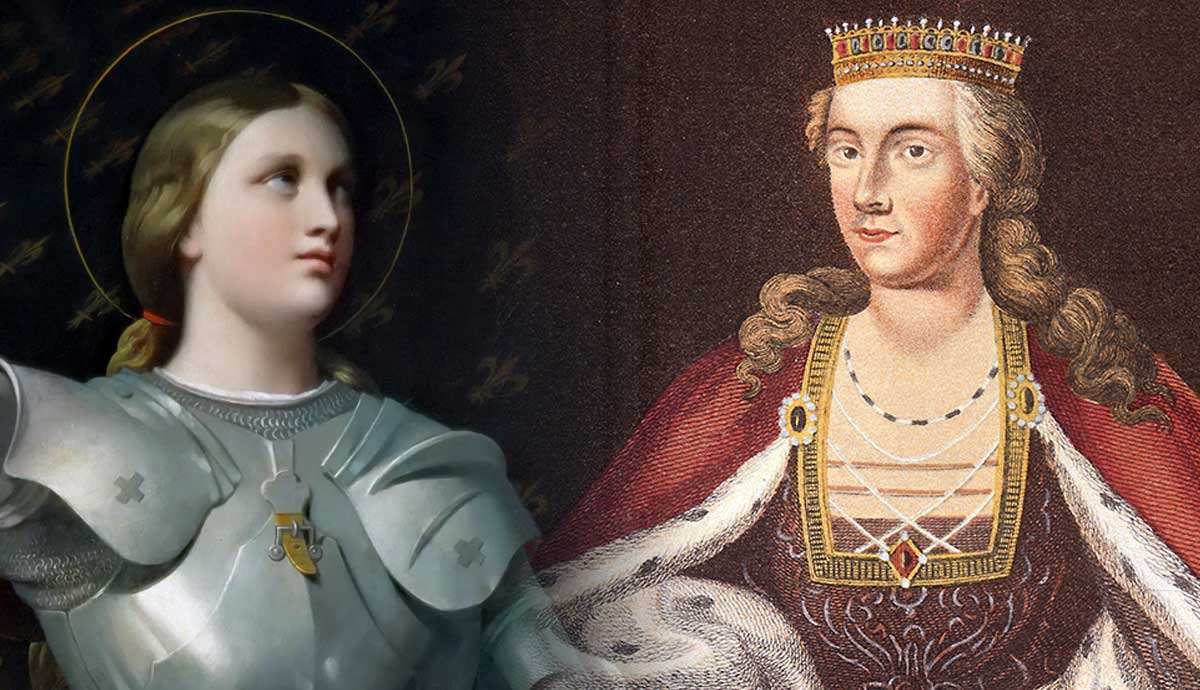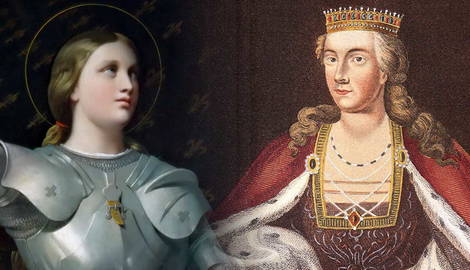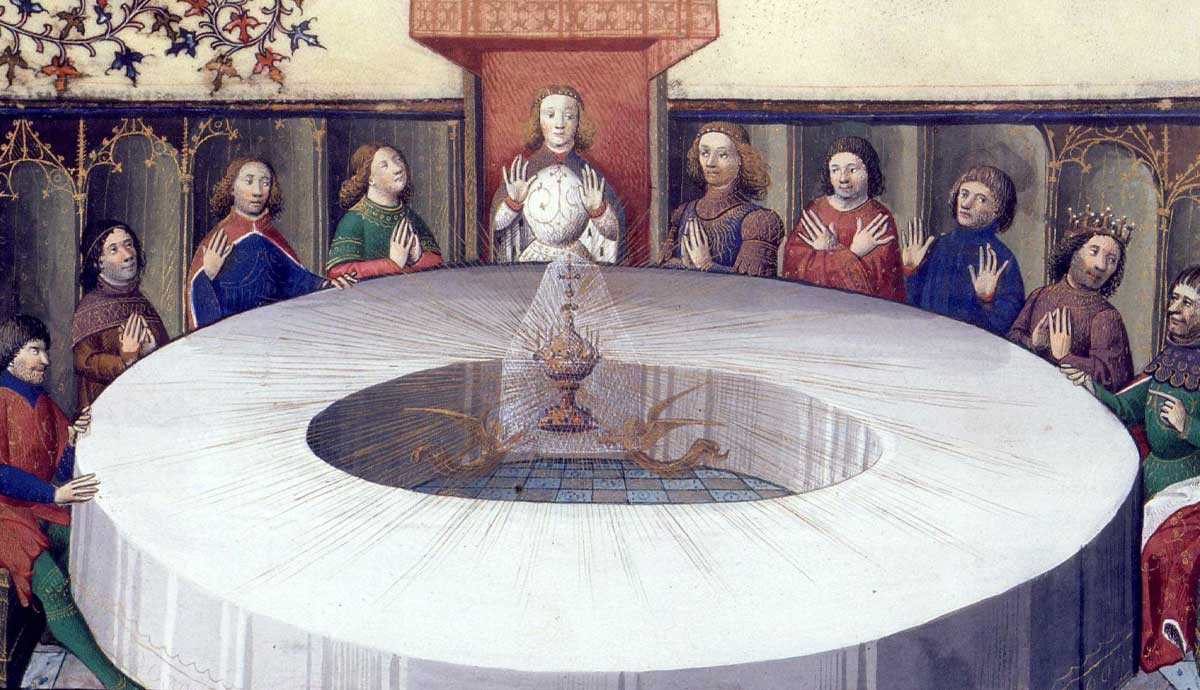
For medieval women, carving out a place of power was exceedingly difficult. For hundreds of years, medieval women and their stories were overlooked and forgotten. However, a select few managed to gain power for themselves in the form of influence or money. These extraordinary women have something to teach us about medieval society and how it was possible for women to gain such power and agency that we would read about them hundreds of years after their deaths.
Support the Pope

Many of the most powerful medieval women gained their power through their families. However, having ties to royalty or other notable family members did not guarantee a woman’s influence. To truly find her own power this way, a woman must have both intelligence and the ability to build strong personal relationships.
Matilda of Tuscany lost her father at a young age. Her mother Beatrice inherited his power and took care of Matilda. She and her mother became very close and even co-ruled for a time. Matilda was married twice but neither marriage was long lived. After her marriage to Godfrey the Bearded began to sour, she left him and repudiated him to enhance her own power. This was rare for women but since her wealth and power came from her parentage, she did not need his support. After both her husbands and her mother died within months of each other, Matilda found herself in a position of great power.
Matilda was the inheritor of much of her wealth and power, however, Matilda was also very intelligent and powerful in her own right, speaking multiple languages and understanding military strategies. She was a devout supporter of the church and was able to lend her military support to the pope, granting her favor with him.
Matilda defended Pope Gregory VII against Henry IV of Germany who was in a struggle for power with the church. In fact, it was at Matilda’s castle that Henry IV came to submit to Gregory in an act of humiliation and to ask for his forgiveness. To receive his forgiveness, Henry was said to crawl on his knees until the pope granted him penance for acting out against the church. Having a woman at the center of such a politically significant event was a testament to her power and influence.
Ruling in Their Own Right

Eleanor of Aquitaine became one of the most powerful women in Europe when her father died in 1137 CE. He left her Aquitaine as well as an additional seven counties. She was now in control of his holdings, which at that time were greater in size, strength, and influence than France.
From birth, she held an advantageous position. She was the Duchess of Aquitaine and received a thorough education. When she married Louis VII of France, she united the two kingdoms under her. Aquitaine and the well-educated Eleanor were not satisfied with letting her husband rule without her input since she brought much more power and wealth to their marriage.
Although the marriage between Eleanor and Louis was not harmonious, she wanted to join the king on his crusade to Jerusalem. While on their voyage back, it was Eleanor’s army, not the King’s, that was better trained and better managed. Louis’s army was disordered and was eventually attacked. However, since Eleanor’s army was well trained, they had journeyed ahead, leaving Louis’s army trapped and without aid. This led to further division in their already cold marriage and eventually, they divorced. In a true showing of her power, Elenor chose her second husband herself.
Becoming a Religious and Cultural Icon

It was not only noble women or well-educated women who were able to gain some influence in medieval times. Joan of Arc is considered one of the greatest heroines of all time, yet it is believed she could not read or write. Joan of Arc gained influence over the people of France through her visions and devotion to God. Joan often had visions from God and the people of France found inspiration in her words and actions.
When Joan was just 17 years old, Charles VII granted an audience with her. At this conference, she promised him he would be crowned king of France. Although he had doubts about her legitimacy, Charles allowed her to accompany the French army and allowed her to wear armor. Her fellow soldiers respected her as a woman of God and with her as their muse, they won a victory over the English in 1429. She also obtained wounds in battle, once getting shot with an arrow between her neck and collarbone. She is reported to have pulled out the arrow and kept on fighting. Although her exact role in combat is still debated today, this image of her assured her status as a folk Catholic icon.
Unfortunately, Joan’s positive influence on the people of France was short-lived. She was captured in battle against the Burgundians. The English then took Joan to Rouen where she was put on trial. Joan was accused of many things including witchcraft and wearing men’s clothing and held in prison. In 1431 when Joan was just 19 years old, she was burned at the stake for her alleged crimes.
Ruling by Proxy

At the age of 15, Margaret of Anjou (1430-1482) married Henry VI of England. Margaret was placed in the unique position to represent her French family and felt pressured to advocate for them in England regarding the Maine region, which the French wanted returned from England. Ultimately, Margaret was successful in obtaining Maine for France. Although the amount of influence she truly had over Henry is contested, it seems that Margaret did have at least some say in the decisions Henry made.
Henry was not a strong ruler and lacked knowledge of military strategy. The people around him often tried to manipulate him. Margaret, however, managed to stay on friendly terms with the powerful nobles.
Margaret also seems to have intervened in other matters. When rebels began fighting on London Bridge, they were later offered pardons which they credited partially to Margaret’s request.

Henry’s family had a long history of mental illness and soon Henry would succumb to what some have called depression. In 1453, Henry’s army was defeated at Castillon which rendered him catatonic for 18 months. He needed assistance to eat and walk and did not respond to those around him. This was so severe he did not react to the birth of his first-born child. In his stead, Margaret put herself forward as a regent but the role went to the Duke of York. Margaret worried for her son and future king of England because the duke had his own claim to the throne.
Once recovered, Henry resumed his throne, however, the Duke of York retained some power from his Yorkist loyalists. Unfortunately for Margaret, she became the envoy in this power struggle as her husband was still too weak. Margaret was willing to take care of the affairs of the state on behalf of her husband and son. She often led her family through political crises and was credited for her diplomacy in such matters.
Devoting Themselves to Religion and Study

Hildegarde of Bingen held significant power in the Catholic Church. In a time when women rarely enjoyed influence over the Church, Hildegarde of Bingen found fame and influence with her religious visions and music. Pope Eugenius III, busy fighting the Cathars, allowed Hildegarde to teach and speak publicly. It was very unusual for a woman, but the Pope saw her as an ally for those who would reject the Catholic Church for other forms of Christianity. Hildegarde was concerned about heretics and used her platform to call for reform.
Although the Catholic Church had at times been at odds with Hildegarde, she was well regarded by many of her male colleagues in the church as someone who could provide guidance. Monks, bishops, and other clergymen often wrote to her seeking advice, and she often supplied both spiritual and practical wisdom.
In addition to her role in the Church, Hildegarde composed a large body of music, much of which survives today. In retrospect, Hildegard held great influence over the religious community, far more than any other woman at the time.
However, Hildegarde also received letters from people from all walks of life and she did not discriminate nor assign special privilege. From giving kind advice to commoners to admonishing kings, Hildegarde felt secure enough in her position to express herself fully. She may have been allowed to do this because her advice letters provided donations to the church by those who she had helped and others who believed in her cause.

Even though the motivation for the Church giving her such a secure position may have been financial, Hildegarde was a force for good. She was a respected individual and person in her own right and not just a woman. For the time being, this was an astonishing accomplishment.
In addition to her influence over the Church and religious matters, Hildegarde even opened her own monastery in 1150 where young girls were often sent with a deep sense of security and safety. This, of course, caused some shock among monks but nonetheless, Hildegarde opened a second monastery in 1165. Much of Hildegarde’s letters, writing, and compositions survive today.








